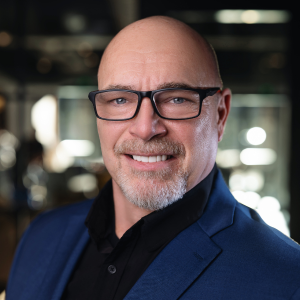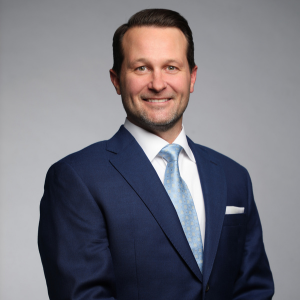How Senior Care Communities Can Use Their Websites and Social Media to Build Trust
Senior care communities face some unique marketing challenges compared to other industries. One of those top challenges is how to build a potential resident and family member’s trust in the community. When marketing a service as personal and vital as senior care, trust is a key element, and it needs to be established early on in the process. We spoke with two marketing experts about how senior care communities can use their social media marketing and websites to build that essential element of trust.
How Social Media and Websites Help Build Trust

Anthony Miyazaki, marketing professor at Florida International University
The effectiveness of social media and websites lies in their ability to showcase the personal side of senior care. “Because senior care is such a personal service, social media accounts and websites that show the personal side of the organization will help to build trust with prospective residents and their families,” says Anthony Miyazaki, a marketing professor at Florida International University in Miami, Florida. Elements such as testimonials and short videos can help showcase those personal connections and build trust.
“Senior care organizations need to be cautious in that they don’t appear to be taking advantage of their residents when sharing personal content on social media,” Miyazaki cautions. “Sometimes it’s best to feature family members rather than the residents themselves.”
But as with any marketing efforts, it’s important that senior care communities develop a strategy and specific goals for their website and social media marketing.
The Importance of Deliberate Planning
The effectiveness of a website or social media account starts with the setup and planning processes. Katana Lemelin, a marketing and behavioral economics speaker, advisor, and strategist, explains that social media accounts and websites can help build an audience’s trust, but those media need to be designed for mobile and with the specific audience in mind. They also need to be easy to use to ensure an optimal user experience.

Katana Lemelin, marketing and behavioral economics speaker, advisor, and strategist
“Consumer avatars are the best way to specifically target an audience and engage them in your marketing and social media,” she says. Consumer or customer avatars, also called buyer personas, represent the type of customer that is most likely to purchase your senior care services. Developing an avatar involves performing market research and defining your ideal customer using details such as their age, income level, occupation, values, interests, and lifestyle. Understanding these details can help you better focus your marketing and deliver messages that are tailored to that specific audience.
“The way we speak to seniors compared to how we speak to their loved ones or caregivers should be different,” Lemelin explains. “They have different goals, age groups, and biases.”
Starting with a consumer avatar can help a senior care community develop appropriate marketing messages and build their social media and website content with their target audience in mind.
Creating Content
With audience in mind, senior care communities can turn their focus to creating quality content for their website and social media platforms. Miyazaki recommends that senior living communities start by considering the aspects that are most important to their community, such as safety, cleanliness, social opportunities, health, and general quality of life. “Then, create and share content that supports these benefits,” he says. He notes that it’s good to involve residents and their families when possible, and communities should aways ensure that they receive permission from and consider the privacy needs of residents and their family members.
It’s also important to keep social media focused on the benefits, activities, and social opportunities available to their residents. “Social media posts that come across as overly salesy are often met with suspicion,” he says. “If consumers are happy with what they’re seeing, they’ll reach out to the organization to learn more.”
Engaging with the Audience
Social media can be uniquely beneficial because it creates opportunities for senior care communities to directly engage with their audiences. But that engagement can have a negative impact if the community doesn’t approach it correctly. “One of the biggest mistakes that care organizations make with respect to social media is posting content and then not responding to comments from their followers and subscribers,” says Miyazaki. “It gives the impression that the people in the organization don’t really care about their community, which is a huge mistake because their primary benefit is care and caring.”
Ensuring appropriate responses starts with how a senior care organization approaches its social media marketing. “Creating social media content is a laborious and time-consuming task, but leaving the social aspect out can negate all that work,” explains Miyazaki. “I suggest at least as much time spent interacting with the community as spent creating content. Ideally, interactions and engagement should be twice as much time.”
Lemelin shares advice regarding navigating any hostile posts received on social media. “Answer any hostility with patience and a solution,” she says. “Leave only three potential messages. The first one is left by the client, and the second one should be your response. If there’s a third by the client, then any further communication should be taken into private messages or emails.” This method demonstrates to the audience that you’re willing to resolve situations and accept criticism where appropriate, and that can help to build audience trust in the community.
Evaluating and Building on Success
Lemelin explains that to measure the success of social media marketing and a website, a senior care community needs to define what trust is and how they will measure success. “This should not be likes or website visits,” noted Lemelin. “This measurement should be tied to a tangible metric.”
Instead of focusing on metrics like visits and likes, Lemelin suggests a different approach. “I recommend senior care centers mitigate confusion and increase engagement with consumer psychology-influenced positive message framing, consumer avatars, and clear internal and external communication,” she says.
Miyazaki explains that other types of marketing activities are ideal in building trust, and they may support and bolster the success that senior care communities achieve using their websites and social media marketing. “One of the key ways to build trust is to showcase your expertise,” Miyazaki says. He notes that senior care communities can showcase their experience via seminars or webinars for family members of prospective residents. “Organizations can also showcase their expertise by writing blog posts that focus on how to select the appropriate care communities, how to care for older family members, how to keep communication lines open, and more,” says Miyazaki. “In essence, become the trusted source of information so that you’ll also become the trusted source for care.”

Paige Cerulli is a contributing writer to i Advance Senior Care.
Related Articles
Topics: Business Marketing Including Social Media and CRM , Facility management , Featured Articles , General Technology , Leadership , Risk Management











